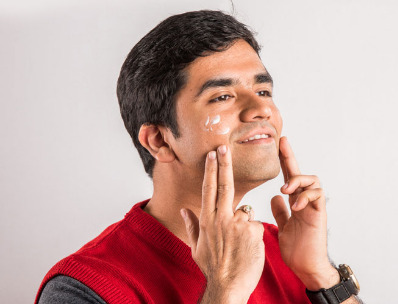It’s the beginning of the year, a time when there’s less daylight and more cloudy, rainy days than the rest of the year. So we can slack off on skin protection, right? Not so. The sun’s harmful rays can still filter through the clouds, leading to skin damage like wrinkles, sunspots, sunburn, and skin cancer.
And sun protection is not just for the beach or while hiking. Putting on sunscreen should be a daily habit before you leave the house, even if you’re just going to work or running errands. Make it part of your daily morning ritual – like brushing your teeth or combing your hair. Over time, even short walks to your car or driving can cause cumulative sun damage over time, said Honolulu dermatologist Dr. Ryan Sato at Kuakini Medical Plaza.
“The more you protect yourself, the better,” Sato said.

Dr. Ryan Sato is a board-certified dermatologist who treats pediatric and adult patients for a variety of skin, hair, and nail conditions.
Here are the top seven misconceptions about sun damage and tips on how to protect yourself:
Myth 1: I don’t need to put on sunscreen because it’s overcast.
Reality: Up to 80 percent of the sun’s UV rays can still pass through clouds and cause sun damage. So you should still put on sunscreen even if it’s cloudy outside.

You can still get skin damage on a cloudy day.
Myth 2: The best way to avoid sun damage is to stay indoors.
Reality: You don’t have to hibernate like a bear during the winter. You can still enjoy the health and well-being benefits of the outdoors. Just take proper steps, such as wearing sunscreen and UV protective shirts, and avoiding peak hours (10 a.m. - 4 p.m.) when UV light is the strongest.
Myth 3: Most sun damage occurs before you’re age 18, so I don’t have to worry about using sunscreen anymore.
Reality: New studies show that we get less than 25 percent of our total sun exposure before age 18. So you’ll get most of your sun exposure as an adult. “Protecting yourself when you’re younger helps, but it doesn’t mean you should not think about skin protection as you get older,” said Sato. “Small changes will go a long way at any age.”
Myth 4: Wearing sunscreen will cause vitamin D deficiency.
Reality: You get enough vitamin D through everyday sun exposure and small amounts that can pass through sunscreen. “And you can get plenty of vitamin D through eating nutritious foods and supplements,” Sato said.

Eggs, dairy, vegetables, and fish are good sources of vitamin D.
Myth 5: I don’t have to worry about getting skin cancer because I’m not Caucasian.
Reality: While it’s true that Caucasians are the number one victims of skin cancer, anyone can get skin cancer. Sato notes that reggae musician Bob Marley died of melanoma at age 36.
Myth 6: I put on sunscreen with a 100 sun protection factor (SPF), so it should last me all day.
Reality: Studies show SPF higher than 30 doesn’t provide any extra protection. It’s more important to reapply sunscreen every couple of hours.

Even guys should apply facial sunscreen as part of their daily ritual.
Myth 7: I work in an office all day so I don’t need to put on sunscreen.
Reality: Glass filters out only one kind of radiation – UVB rays. So UVA rays can still get through if you work near a window. Even if the glass is tinted. Sato notes how photographic studies show people can look older on one side of the face – the side next to the window while driving.
For more information on protecting your skin from the sun, visit The Skin Cancer Foundation.




